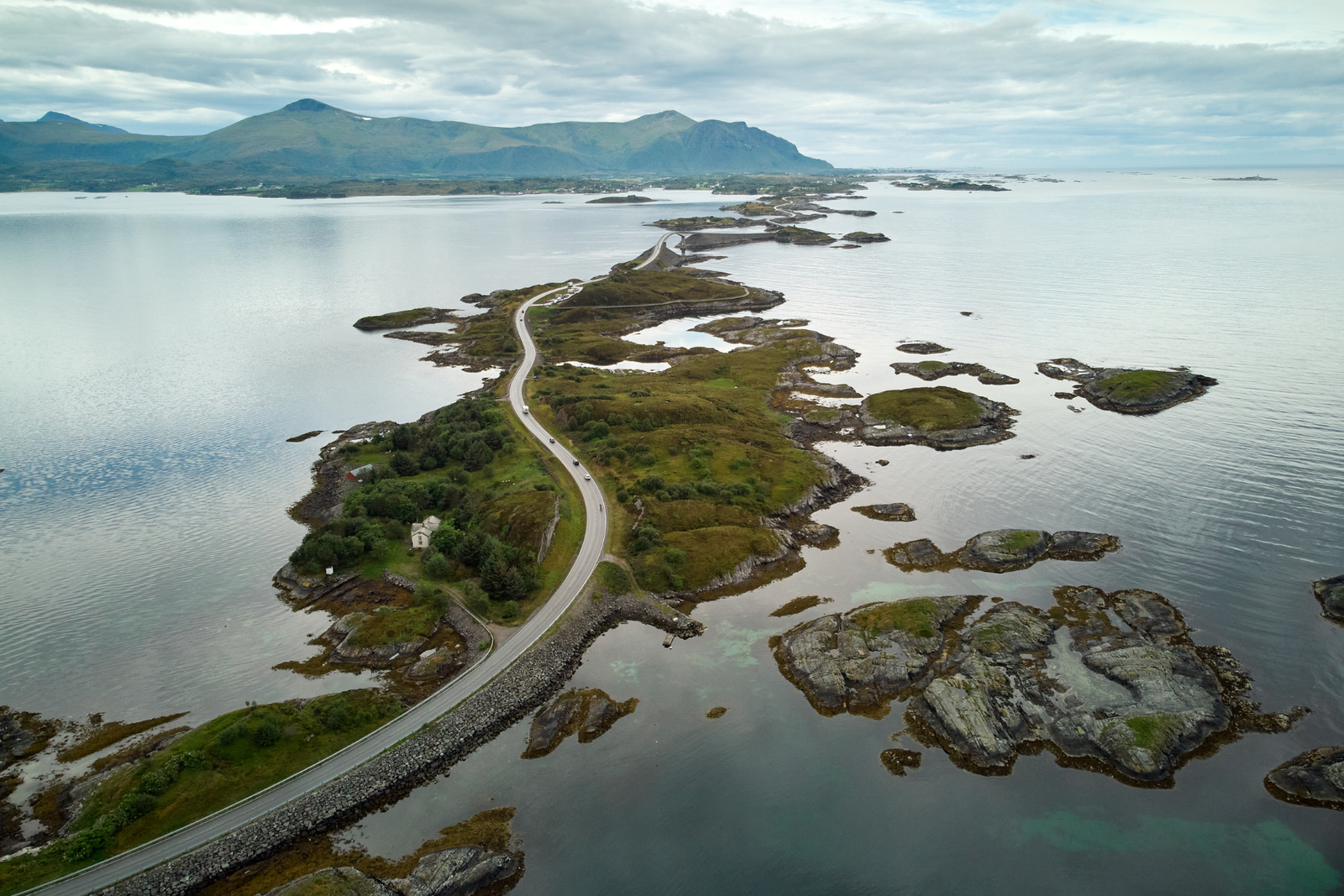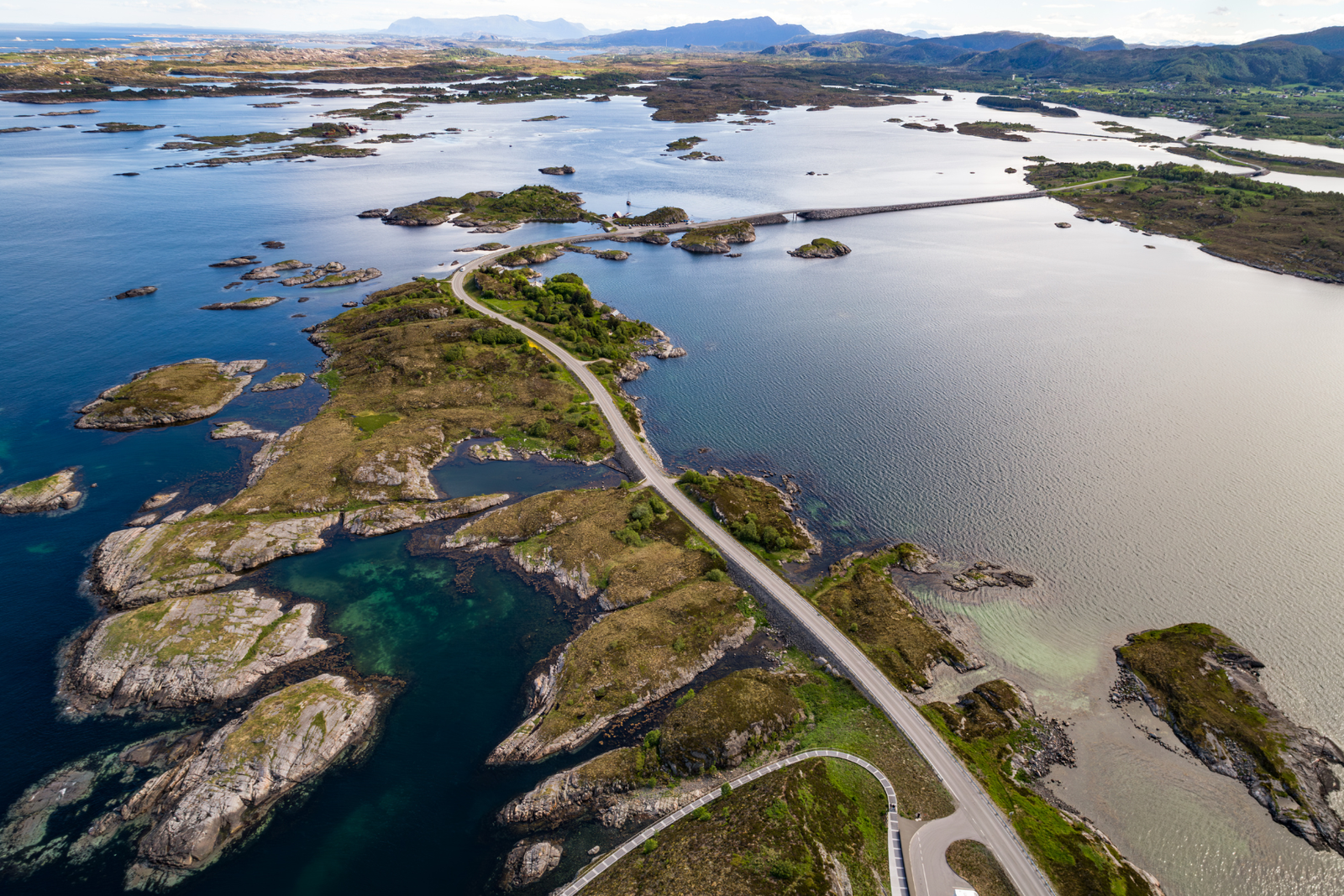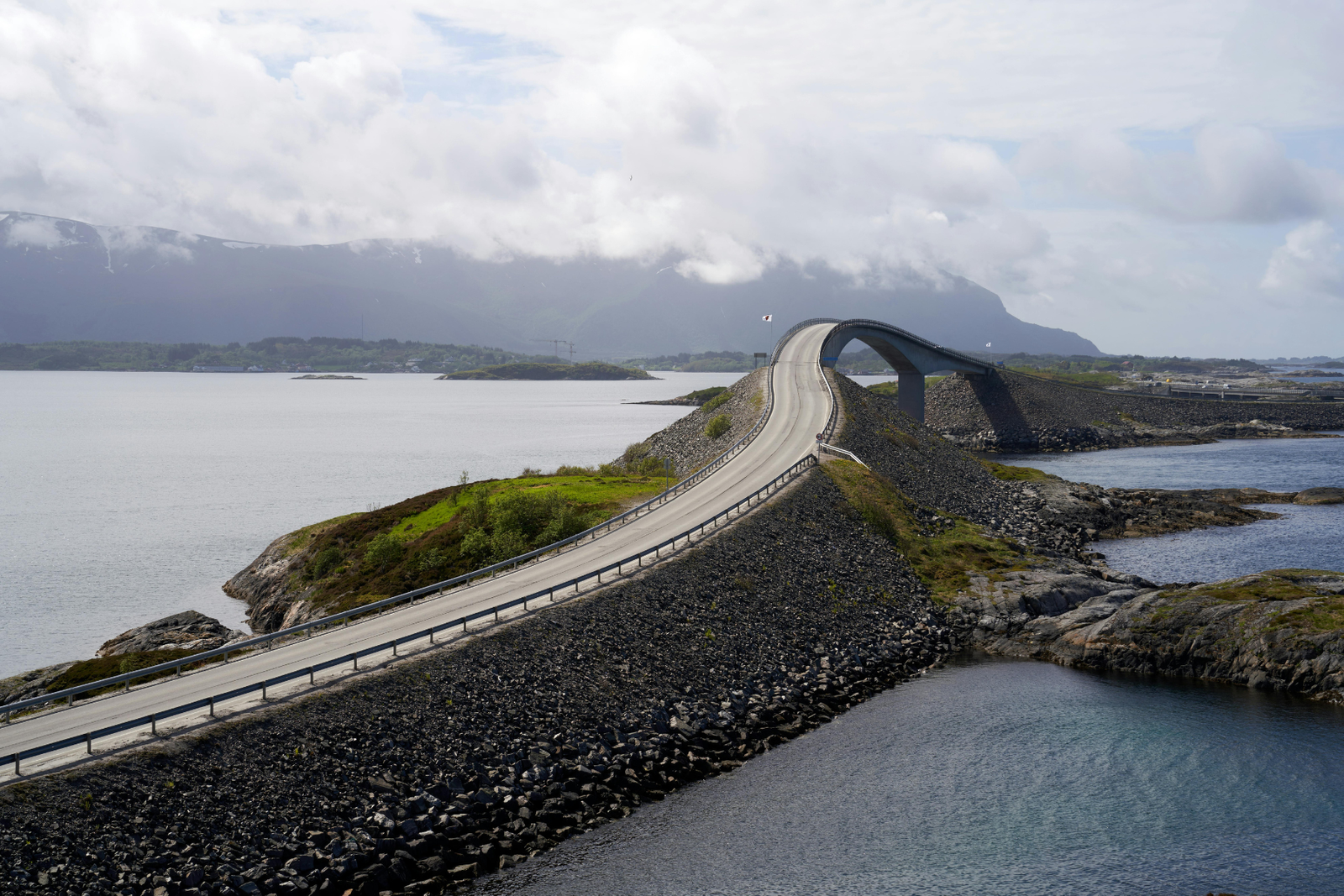The Atlantic Ocean Road (Atlanterhavsveien) is one of the world’s most scenic and exhilarating drives, offering travelers an unforgettable journey through Norway’s stunning coastal landscapes. Stretching across the Atlantic Ocean, the road connects a series of small islands via bridges, causeways, and viaducts, creating a driving experience like no other. If you’re planning a road trip in Norway, the Atlantic Ocean Road should undoubtedly be on your list. Here’s everything you need to know to make the most of this iconic route.
1. What is the Atlantic Ocean Road?

The Atlantic Ocean Road is a 8.3-kilometer stretch of road that connects the towns of Kristiansund and Molde, passing through several islands along Norway’s western coastline. The route is known for its spectacular views of the ocean, dramatic coastal cliffs, and unique engineering feats. The road is particularly famous for its surreal bridges, which seem to disappear into the ocean or climb steep hills, creating a sense of adventure and awe.
2. The Best Time to Drive the Atlantic Ocean Road

The best time to take a road trip along the Atlantic Ocean Road is during the warmer months of late spring to early autumn (May to September), when the weather is milder, and the days are longer. While the road is open year-round, the unpredictable weather in winter, including heavy rain and snow, can make driving conditions challenging. In the summer months, you’ll also have the chance to enjoy the midnight sun, giving you extra daylight hours to explore.
3. What to Expect Along the Route

The drive itself is an experience, offering a mix of natural beauty and awe-inspiring engineering. Here are some of the key highlights you can look forward to along the way:
- Storseisundet Bridge: One of the most iconic and photographed spots along the Atlantic Ocean Road, Storseisundet Bridge is a remarkable feat of engineering. Its steep curve gives the illusion that the bridge is spiraling into the sea. As you cross this bridge, you’ll be treated to breathtaking views of the ocean and surrounding islands.
- Atlanterhavsveien Visitor Center: Located near the western end of the road, this visitor center offers interactive exhibits about the road’s construction and its significance in Norwegian culture. You can also enjoy panoramic views of the road and the islands from the center’s viewing platform.
- Kvernes Stave Church: A short detour off the main road leads to the Kvernes Stave Church, a beautiful wooden structure that dates back to the 1300s. The church, surrounded by lush greenery, is one of the best-preserved stave churches in Norway and is well worth a visit.
- Fishing Villages: As you drive along the Atlantic Ocean Road, you’ll pass charming fishing villages, such as Averøy, where you can learn about the region’s fishing traditions. Stop by local seafood restaurants to sample fresh fish and traditional Norwegian dishes.
- The Viewpoints: Along the route, there are several designated viewpoints where you can pull over and take in the stunning scenery. Some of these viewpoints are elevated, providing spectacular panoramic views of the Atlantic Ocean, rugged islands, and surrounding mountains.
4. Things to Do Along the Atlantic Ocean Road

While the drive itself is the main attraction, there are plenty of activities and stops along the route that will enhance your experience:
- Hiking: The surrounding landscape is perfect for hiking, with several trails leading to viewpoints or along the cliffs, offering a closer look at the ocean and the islands. The Romsdalseggen Ridge, located near the end of the road in Molde, is a popular hiking destination that provides breathtaking views of the fjords and mountains.
- Birdwatching: The coastal areas of the Atlantic Ocean Road are rich in wildlife, and birdwatching is a popular activity. The region is home to various seabirds, including puffins and sea eagles. Bring your binoculars and enjoy spotting these fascinating creatures in their natural habitat.
- Kayaking: For a more immersive experience, consider renting a kayak and paddling along the coast. The calm waters around the islands are perfect for kayaking, and you’ll have the opportunity to get even closer to the rugged coastline and wildlife.
- Fishing: Norway is famous for its fishing culture, and the Atlantic Ocean Road is no exception. You can take part in a fishing excursion or try your luck from one of the many piers along the route.
- Cycling: The Atlantic Ocean Road is also a popular route for cycling enthusiasts. The road is mostly flat and relatively short, making it ideal for cyclists who want to enjoy the views at a leisurely pace.
5. Where to Stay Along the Atlantic Ocean Road

There are several towns and villages along the Atlantic Ocean Road where you can stop and rest, making it easy to break up your road trip into manageable sections:
- Kristiansund: Located at the eastern end of the road, Kristiansund is a charming coastal town known for its traditional fishing culture. It offers a range of accommodation options, from hotels to cozy guesthouses.
- Averøy: The island of Averøy, located in the middle of the route, has several charming accommodations, including cabins and guesthouses. It’s a great place to stop for a night and explore the surrounding area.
- Molde: Known as the “Town of Roses,” Molde is located at the western end of the Atlantic Ocean Road. This picturesque town offers a variety of accommodation options, including hotels with views of the fjords and mountains.
A road trip along the Atlantic Ocean Road is a journey of a lifetime, offering unparalleled views of Norway’s rugged coastline, spectacular bridges, and charming villages. Whether you’re driving for the views, hiking the surrounding landscapes, or enjoying outdoor activities like kayaking and fishing, this iconic route offers something for everyone. So, pack your bags, hit the road, and get ready for an adventure along one of the world’s most scenic drives.












